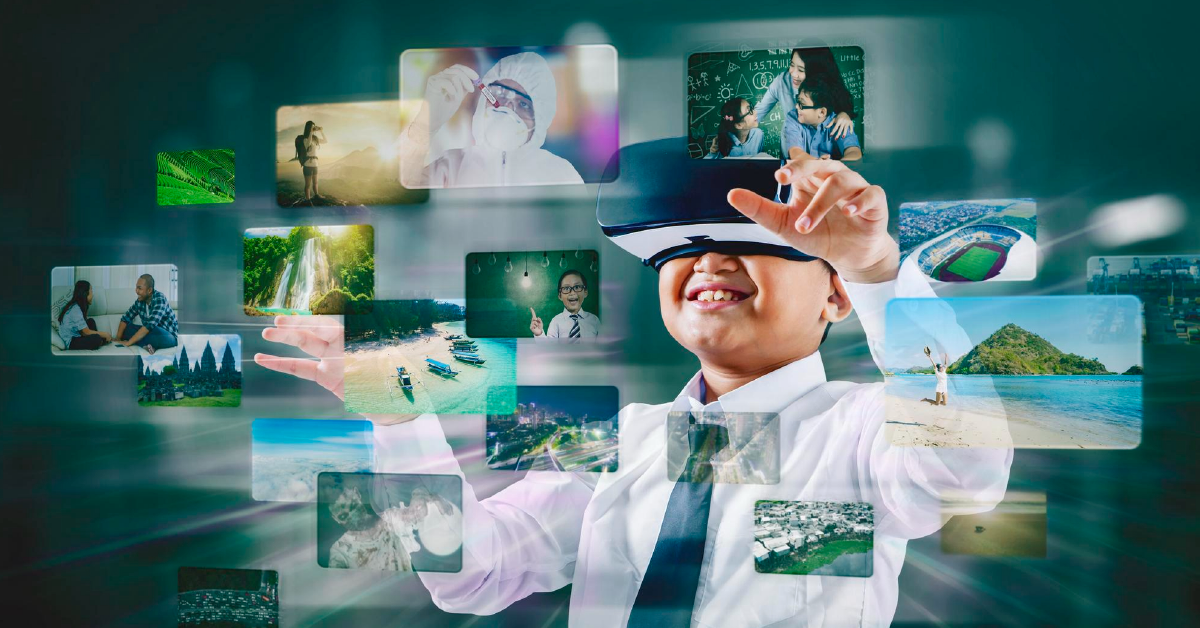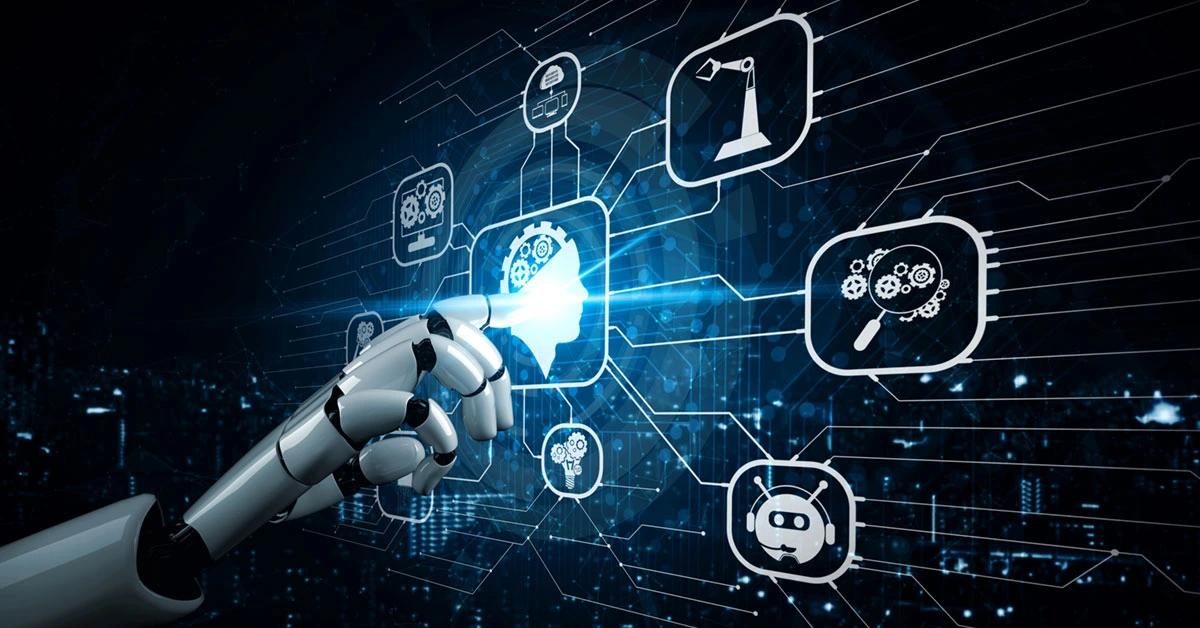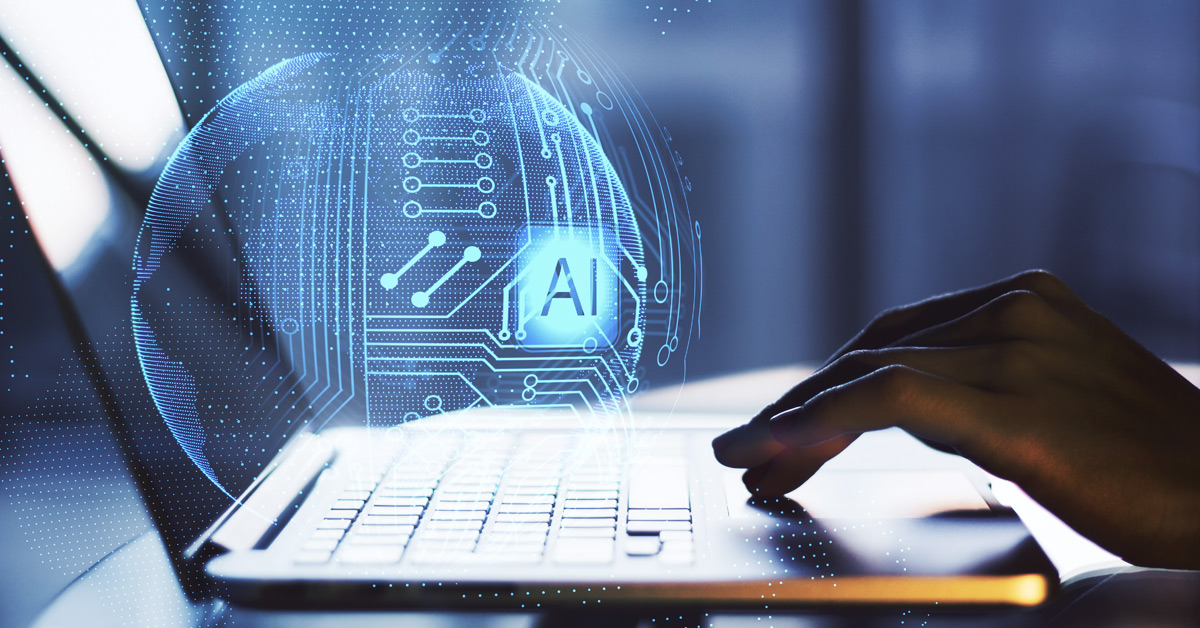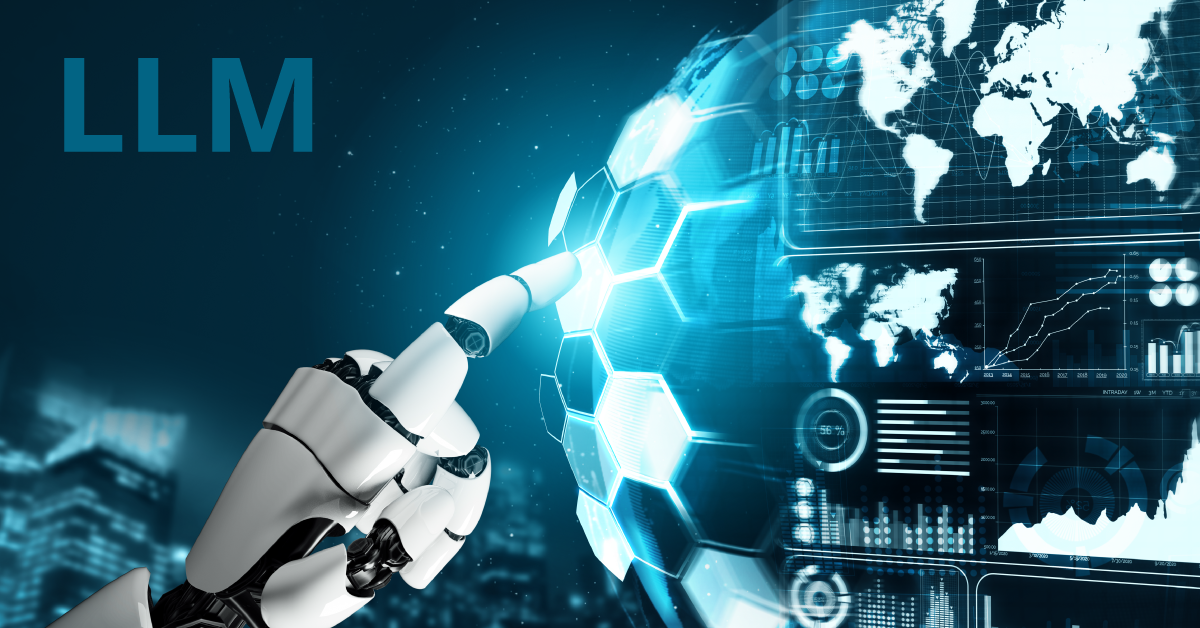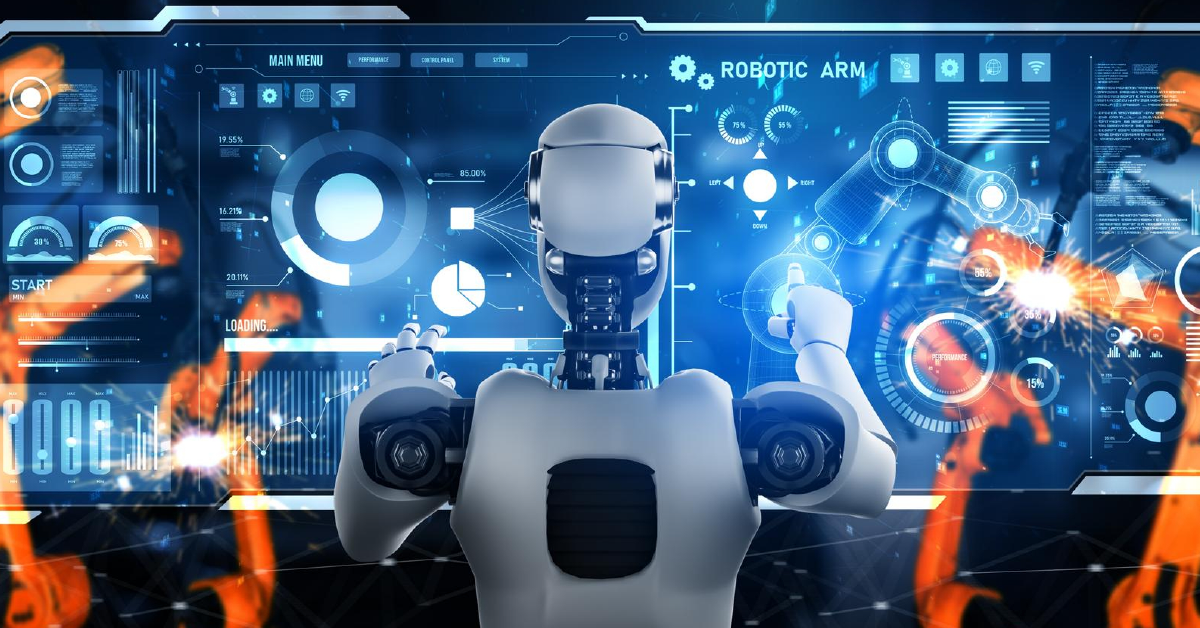Visual Intelligence: Exploring AI-Driven Computer Vision Solutions
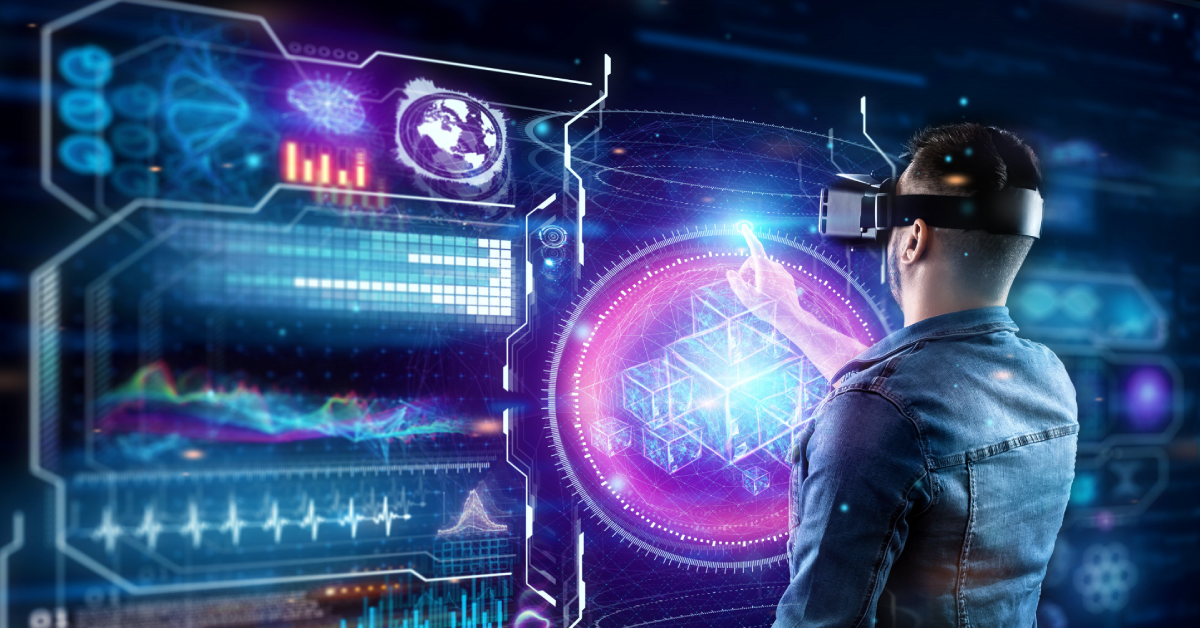
6 min read
The fusion of artificial intelligence (AI) advancements with computer vision opens new edges in how machines interpret and interact with the visual world around us. This collaboration between AI and computer vision solutions is not just a leap forward; it’s transforming industries and enhancing how we live and work. The impact is profound and pervasive, from Computer Vision Services that power security systems to Visual AI applications that change how we shop.
How is AI Being Used to Solve Computer Vision?
Computer vision is changing due to artificial intelligence (AI), increasing systems’ abilities to interpret and interact profoundly with the visual world. With the help of deep learning algorithms, AI significantly improves image and video recognition capabilities, enabling the identification of objects, faces, and activities by training neural networks with extensive visual content datasets. This advancement is essential across various domains, from medical imaging, where AI helps detect disease markers, to security, assisting in surveilling potentially suspicious activities.
Moreover, AI’s prowess in pattern detection and classification further extends the utility of visual intelligence, making it indispensable for tasks requiring precise visual data categorisation. The real-time detection and tracking of objects by AI-enhanced systems are essential for the navigation of autonomous vehicles and drones, relying on the instantaneous analysis of visual inputs to ensure safe manoeuvring in dynamic environments. AI also plays a vital role in scene reconstruction, translating 2D images into 3D models to support VR and AR technologies, thus enabling immersive experiences that imitate real-world physics and spatial awareness.
Additionally, AI’s ability to interpret visual data goes beyond mere recognition and tracking; it delves into understanding the context and sentiments of scenes, predicting subsequent actions, and enhancing interactions within AI-driven applications. This advanced level of visual data interpretation opens new avenues for creating intelligent surveillance systems and improving user engagement across digital platforms. The integration of AI in solving visual intelligence challenges marks a significant leap towards building machines that see and understand the world with a depth and precision that mirrors human vision, unlocking endless possibilities for innovation and application across industries.
How Does Visual Artificial Intelligence Bridge the Gap Between Human and Machine Vision?
Computers can understand images and movies nearly as well as humans due to a technology known as visual artificial intelligence, or visual AI. Making informed decisions requires seeing things and genuinely understanding what is seen. Visual AI is bringing about vast changes. For instance, it enhances security through improved facial recognition technology and increases the safety of self-driving automobiles by assisting them in identifying barriers and road signs.
Through more accurate picture analysis, visual AI also improves healthcare by assisting medical professionals in identifying diseases early. Using images rather than words to search for things transforms how we purchase in retail. The speed at which this technology develops creates new opportunities for human-machine interaction. It’s setting the standard for making technology more innovative and helpful in our day-to-day activities, including healthcare, shopping, and safety. There are countless chances for Visual AI to improve and link our lives; thus, the future of this technology is bright.
How has AI Impacted Computer Vision?
The impact of AI on Computer Vision in AI is undeniable. It has dramatically increased the capabilities of computer vision systems, making them more accurate, faster, and more reliable. AI solutions have enabled computer vision technologies to understand context, learn from new data, and improve over time. This continuous improvement loop means that AI-driven computer vision systems constantly evolve, becoming more advanced with each interaction.
- Improved Accuracy and Speed: AI for Computer Vision Applications has significantly improved the speed and accuracy of these systems, making them more reliable for various applications.
- Learning and Adaptation: With the help of AI, computer vision technologies can learn from context and new data, continuously improving their performance over time.
- Advanced Evolution: Through continuous learning, AI-driven visual intelligence systems constantly evolve, becoming more intricate and capable with each interaction.
- Improved Understanding: AI enables computer vision systems to understand complex scenes and interpret visual data in ways similar to human cognition, such as recognizing faces or interpreting emotions.
- Predictive Capabilities: Beyond just interpretation, artificial intelligence has endowed computer vision with the ability to predict future events by analyzing patterns, enhancing safety and efficiency across various sectors.
- Innovative Applications: The collaboration of AI and computer vision has led to creative applications, from autonomous vehicles navigating through traffic to advanced medical imaging that detects diseases early.
- Anticipatory Solutions: AI’s predictive analysis through computer vision is crafting more innovative solutions across industries, from traffic management to agricultural forecasting, making operations more efficient and proactive.
- Technological Integration: The integration of AI with computer vision is a testament to human ingenuity, offering innovative solutions that connect the gap between mere seeing and deep understanding.
Transforming Industries with Computer Vision AI:
Computer vision AI is developing many industries by providing them with the tools to solve complex visual tasks. For example, in healthcare, AI and computer vision solutions are used to analyze medical images to detect diseases early. In retail, computer vision services offer personalized shopping experiences through intelligent recommendations based on visual search capabilities. The advancements in artificial intelligence have thus paved the way for computer vision to become a cornerstone technology across diverse sectors.
How Can Challenges Be Navigated and the Future Embraced with AI and Computer Vision?
Although integrating AI with computer vision is intriguing, several obstacles exist, including managing massive volumes of data, privacy concerns, and preventing bias in AI choices. The good news is that initiatives to develop moral AI standards are moving closer to resolving these problems. These rules help ensure that AI treats everyone equally, protects data, and respects our privacy.
Although these problems may appear insurmountable, users, businesses, and AI developers are working together to solve them. Everyone is cooperating to ensure that AI technologies—such as computer vision—are applied in ways that are advantageous and equitable for all parties. Working together is paving the way for a time when artificial intelligence will uphold the highest moral standards while simultaneously making our lives easier.
The process of merging AI and computer vision demonstrates how inventive and driven people can be to advance technology as we move forward. It’s a route that looks forward to a time when artificial intelligence (AI) helps us accomplish amazing feats while upholding our moral principles.
Conclusion:
The journey of AI in enhancing visual intelligence is one of the most exciting descriptions in the technology space today. With each advancement, we move closer to a world where machines can see and understand our world with clarity and insight. Looking ahead, there are countless opportunities.
Pranathi Software Services is at the forefront of this change, creating intelligent solutions that help businesses in many industries, from healthcare to retail. We make systems that can understand and react to visual information just like humans, making things faster, more accurate, and safer for everyone.
The future of technology is not just more brilliant machines but technology that understands and works better for all of us. At Pranathi Software Services, we’re excited about visual AI and computer vision possibilities. We are working on improving our solutions and exploring new ways they can be used. We invite businesses and innovators to join us in this adventure. With our technology, we are not just imagining the future but building it. At the heart of this revolution, Computer Vision Services and AI solutions continue pushing the boundaries. And making Visual Intelligence a concept and a reality that shapes our everyday lives.
FAQ:
1. What is AI-driven computer vision?
AI-driven computer vision is a technology that allows machines to interpret and understand visual information from the world around us, much like human vision, but with the ability to analyze and make decisions based on that visual data.
2. How is AI used to improve visual intelligence systems?
AI, mainly through deep learning algorithms, enhances visuak intelligence systems by enabling them to recognize objects, faces, and activities more accurately and quickly, learn from new data, and adapt over time to become more efficient.
3. What are some typical applications of computer vision enhanced by AI?
AI-enhanced computer vision is used in various fields, including medical imaging for disease detection, autonomous vehicles for navigation, retail for personalized shopping experiences, and security for surveillance and facial recognition.
4. What challenges does AI face in computer vision?
Some challenges include ensuring privacy, managing data interpretation complexity, minimising AI algorithm biases. And addressing ethical considerations related to automated decision-making.
5. How does AI-driven visual intelligence impact industries?
It revolutionizes industries by providing more accurate diagnostics in healthcare. And improving safety and efficiency in transportation through autonomous vehicles, enhancing customer experiences in retail. And increasing security through advanced surveillance capabilities.
6. Can AI-driven visual intelligence predict future events?
By analyzing patterns and data, AI-driven visual intelligence systems can predict outcomes, such as traffic flow or potential security breaches. And making operations across various sectors more efficient and proactive.
7. What future developments can we expect in AI-driven visual intelligence?
Future developments include more sophisticated predictive capabilities, better integration with augmented and virtual reality technologies for immersive experiences. And continuous accuracy, speed, and reliability improvements as AI technologies evolve.
Published: April 26th, 2024
Tags:
- Advancements in artificial intelligence
- Advances in AI
- AI and computer vision solutions
- AI for Computer Vision Applications
- AI solutions
- AI systems
- Artificial Intelligence (AI) and Machine Learning (ML)
- Computer vision AI
- Computer Vision in AI
- Computer Vision Services
- Machine Learning 2.0
- machine learning algorithms
- Visual Artificial Intelligence

